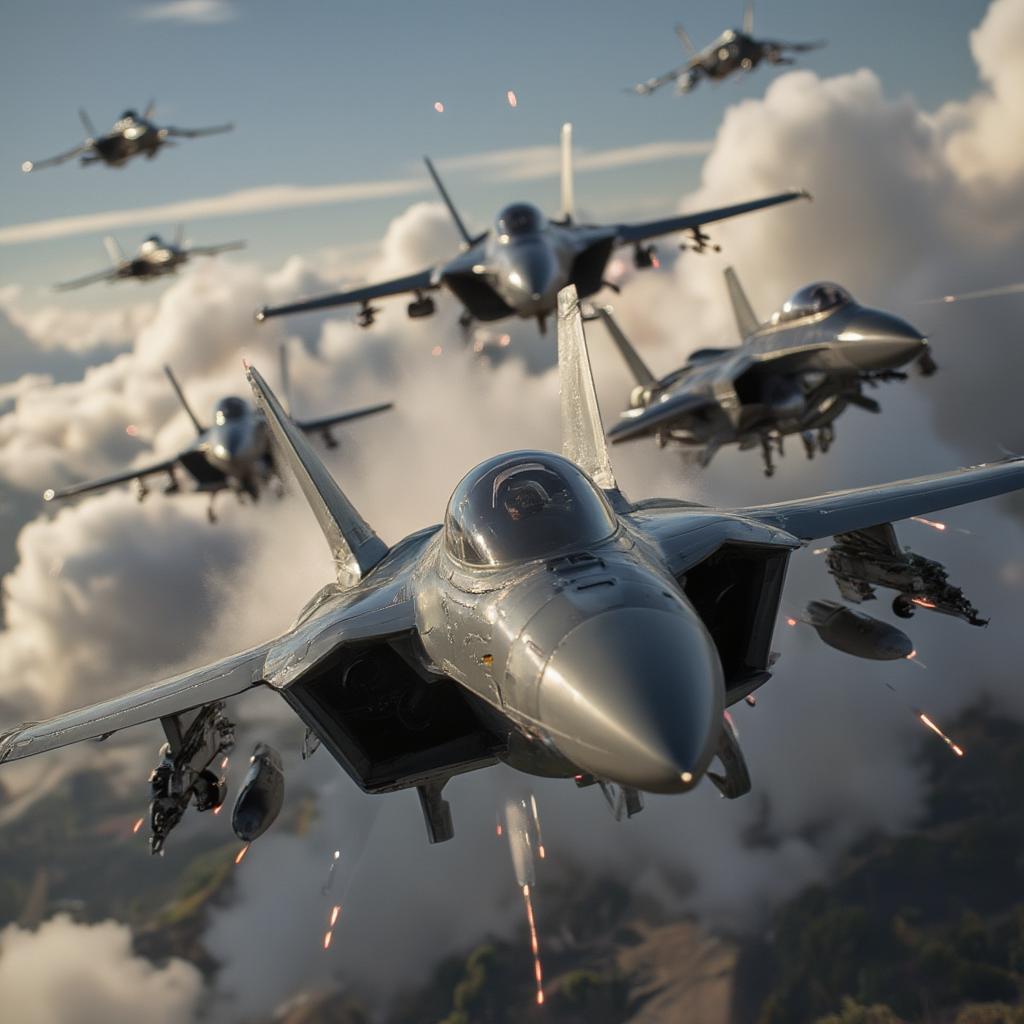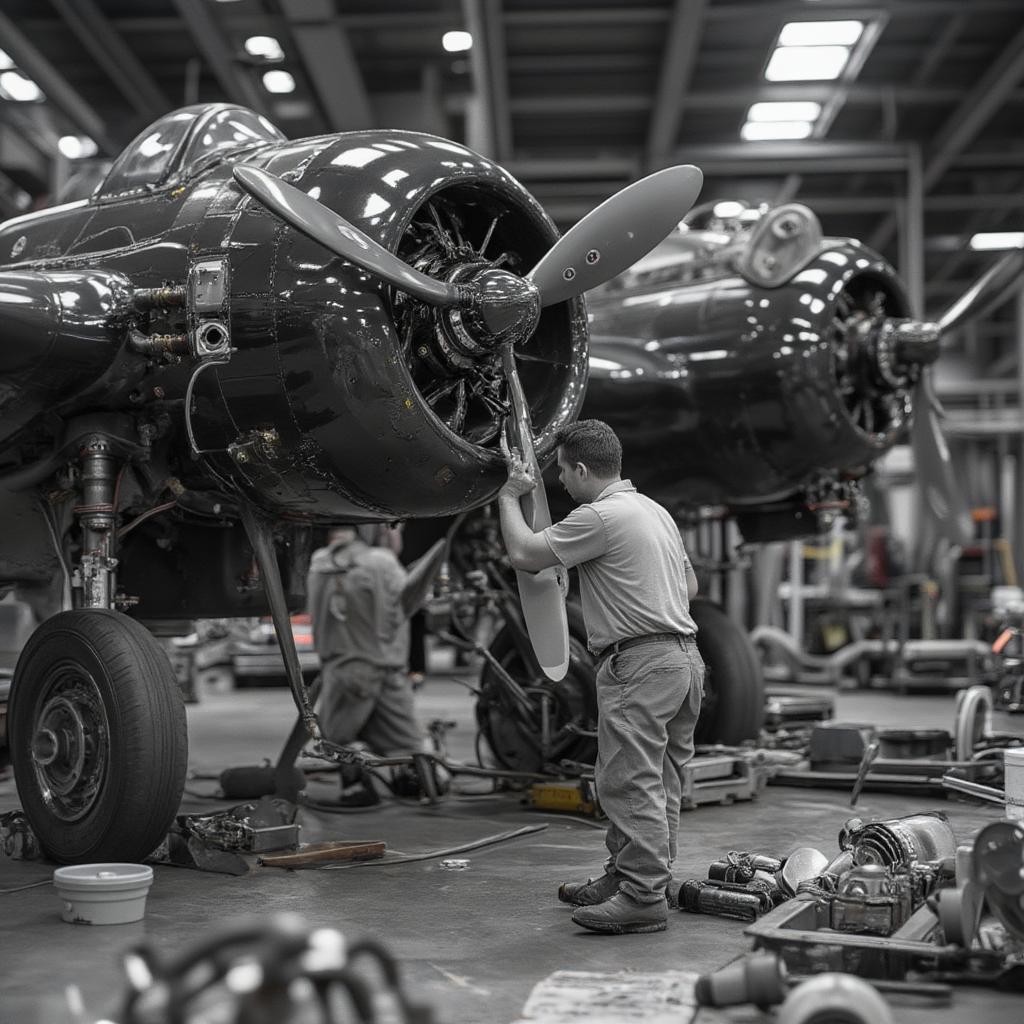Decoding the 6th Gen Stealth Fighter: Air Superiority in the 21st Century

The 6th Gen Stealth Fighter represents a paradigm shift in air combat, pushing the boundaries of technology and redefining the future of warfare. These next-generation aircraft are poised to dominate the skies, leveraging cutting-edge advancements in stealth, sensor fusion, artificial intelligence, and directed energy weapons.
The Dawn of a New Era: What Defines a 6th Generation Fighter?
While still largely conceptual, the 6th generation stealth fighter is characterized by a suite of capabilities that significantly surpass its predecessors. These defining features include enhanced stealth technology enabling near invisibility to radar, advanced sensor fusion providing a comprehensive battlefield picture, optional manned capabilities, AI-driven autonomy facilitating complex decision-making, and the potential integration of directed energy weapons. This leap in technology signifies more than just an incremental upgrade; it represents a fundamental transformation in air power.
Beyond Stealth: A Multi-Domain Mastery
The defining characteristics of 6th gen fighters extend beyond mere stealth. They are envisioned as multi-domain platforms capable of seamlessly operating across air, space, and cyberspace. This interconnectedness allows for unparalleled situational awareness, enabling pilots (or AI systems) to make informed decisions in real-time and dominate the battlefield. The ability to network with other assets, such as satellites and unmanned aerial vehicles (UAVs), further enhances their combat effectiveness, creating a force multiplier effect.
Optional Manned: The Rise of the AI Wingman
One of the most revolutionary aspects of the 6th generation is the potential for optional manned flight. This means the aircraft could operate with or without a human pilot, allowing for greater flexibility and adaptability in missions. AI-powered systems can execute complex maneuvers, analyze vast amounts of data, and react with lightning-fast speed, potentially exceeding human capabilities in certain scenarios. This doesn’t necessarily eliminate the role of the pilot but transforms it into that of a mission commander overseeing a team of autonomous wingmen.
Directed Energy Weapons: A Game Changer in Aerial Warfare?
The integration of directed energy weapons (DEWs), such as lasers, represents a potential game-changer in aerial combat. DEWs offer the promise of near-instantaneous target engagement, a virtually unlimited magazine, and significantly lower operating costs compared to traditional munitions. However, considerable technological hurdles remain before DEWs become a practical reality for fighter aircraft, including power generation and beam focusing challenges.
The Geopolitical Impact of 6th Generation Fighters
The development and deployment of 6th generation fighters will undoubtedly have profound implications for global security. These aircraft will significantly alter the balance of power, potentially sparking a new arms race as nations compete for air superiority. The ability to project power and deter aggression will be fundamentally reshaped.
A Catalyst for Innovation: The Global Race for Air Supremacy
The pursuit of 6th generation fighter technology has spurred a global race for technological innovation. Countries like the United States, Russia, and China are investing heavily in research and development, pushing the boundaries of aerospace engineering. This competition is driving advancements in various fields, including materials science, propulsion systems, and artificial intelligence, with potential spillover benefits for civilian applications.
Deterring Aggression: Maintaining Peace Through Strength
The advanced capabilities of 6th generation fighters are expected to provide a significant deterrent against potential adversaries. The sheer technological superiority of these aircraft could discourage aggression, promoting stability and preventing conflicts. However, the proliferation of such advanced technology also carries risks, potentially escalating tensions and increasing the likelihood of arms races.

The Future of Air Combat: Adapting to a Changing World
The 6th gen stealth fighter isn’t just about technological advancement; it’s about adapting to the evolving nature of warfare. As threats become more sophisticated and diverse, air forces need a platform that can address a wide range of challenges. These aircraft are being designed with future conflicts in mind, ensuring that they remain at the forefront of military technology for decades to come.
Meeting the Challenges of Tomorrow: Versatility and Adaptability
Future conflicts are likely to be characterized by a complex interplay of conventional and unconventional warfare, cyberattacks, and information warfare. 6th generation fighters are being designed with versatility and adaptability in mind, enabling them to effectively respond to a wide spectrum of threats. Their advanced sensor suites and AI-powered systems allow for rapid analysis of complex situations and the execution of dynamic missions.
“The development of 6th generation fighters is not just about building a better airplane; it’s about building a more resilient and adaptable air force capable of meeting the challenges of an increasingly complex and unpredictable world,” explains Dr. Emily Carter, a leading aerospace engineer at the Institute for Defense Analyses.
“These aircraft represent a significant leap forward in military technology, potentially altering the course of future conflicts,” adds General Mark Davis (Ret.), former Commander of Air Combat Command. “Their advanced capabilities will provide a decisive advantage in contested airspace.”
Conclusion: The 6th Gen Stealth Fighter – A Force for the Future
The 6th gen stealth fighter represents a pivotal moment in the evolution of air power. Its advanced capabilities, including enhanced stealth, AI-driven autonomy, and potential directed energy weapons, promise to revolutionize aerial warfare. As nations continue to invest in this transformative technology, the 6th generation fighter will undoubtedly play a critical role in shaping the future of global security. The development and deployment of these aircraft will be crucial for maintaining air superiority and deterring aggression in the 21st century.

FAQ: Unraveling the Mysteries of the 6th Generation Fighter
-
What makes a 6th generation fighter different from a 5th generation fighter? 6th generation fighters incorporate more advanced stealth technology, optional manned capabilities, AI-driven autonomy, potential directed energy weapons, and enhanced multi-domain operations compared to their 5th generation predecessors.
-
When will 6th generation fighters be operational? While still in the developmental phase, most experts predict that 6th generation fighters will likely become operational in the 2030s or 2040s.
-
Which countries are developing 6th generation fighters? Several countries, including the United States, Russia, China, Japan, and the United Kingdom, are actively pursuing 6th generation fighter programs.
-
How much will a 6th generation fighter cost? The cost of a 6th generation fighter is projected to be significantly higher than current fighters, potentially reaching hundreds of millions of dollars per aircraft.
-
What are the potential risks of developing 6th generation fighters? Potential risks include escalating arms races, increasing military spending, and the potential for misuse of advanced technology.
-
What role will AI play in 6th generation fighters? AI is expected to play a crucial role in enabling autonomous flight, enhancing situational awareness, and facilitating complex decision-making in 6th generation fighters.
-
Are directed energy weapons a certainty for 6th generation fighters? While DEWs hold great promise, significant technological challenges remain, and their integration into 6th generation fighters is not yet guaranteed.
-
How will 6th generation fighters impact pilot training? Pilot training will likely need to adapt to incorporate the advanced technologies and operational concepts associated with 6th generation fighters, potentially including greater emphasis on AI collaboration and multi-domain operations.
-
Will 6th generation fighters make other aircraft obsolete? While 6th generation fighters will represent a significant advancement, other aircraft, including 5th generation fighters and various support aircraft, will likely continue to play important roles in a multi-layered air power strategy.




